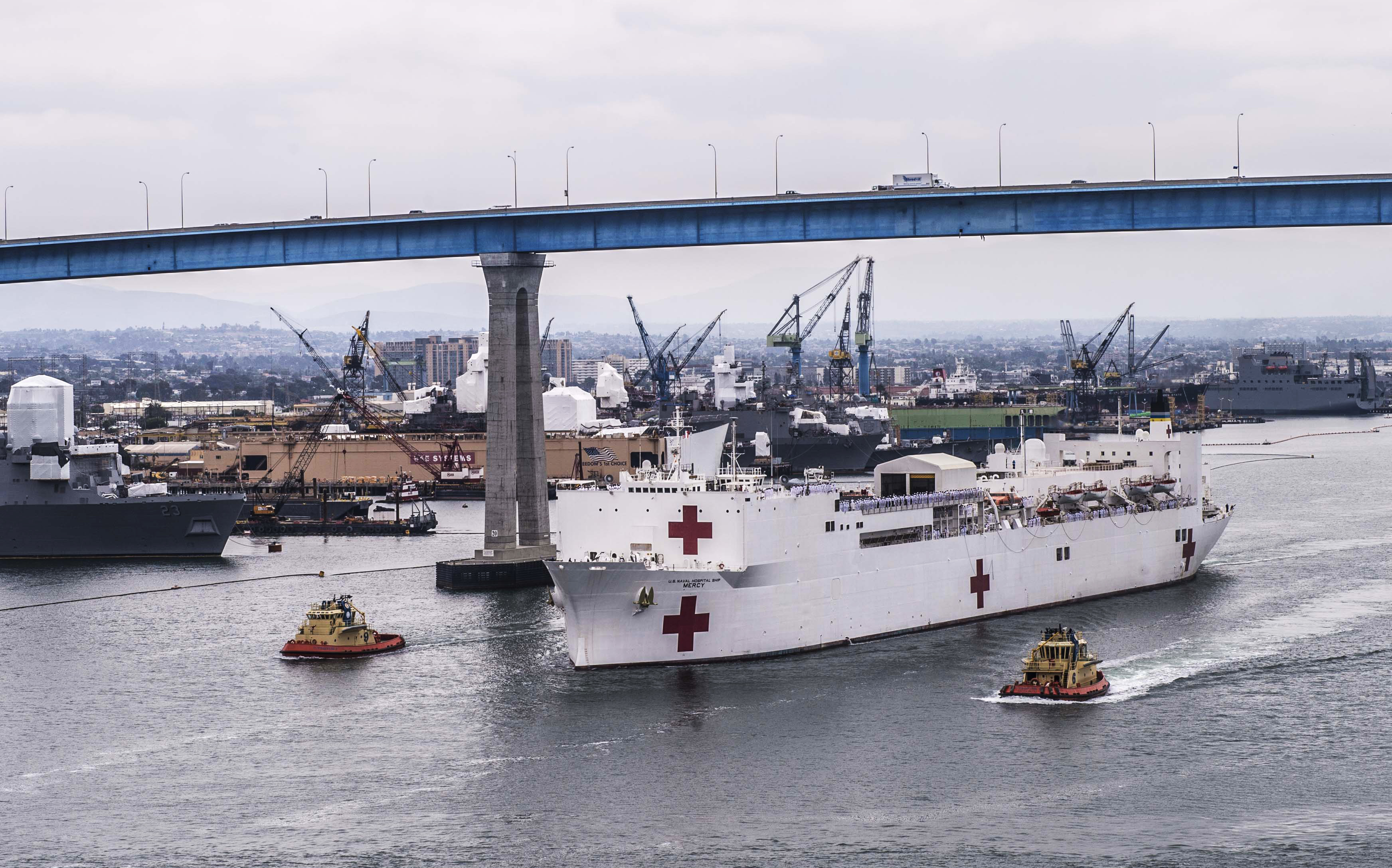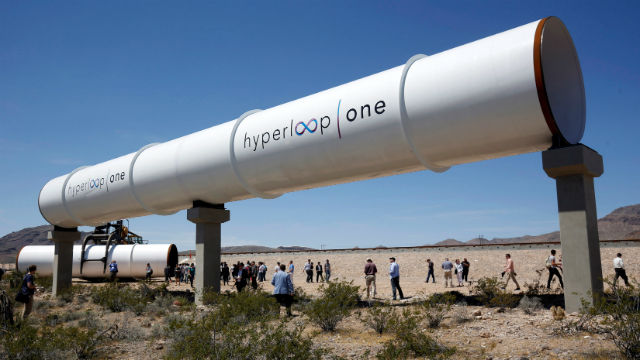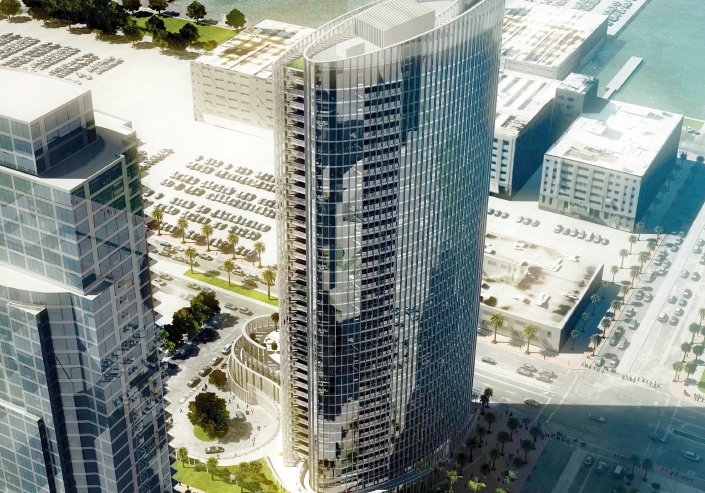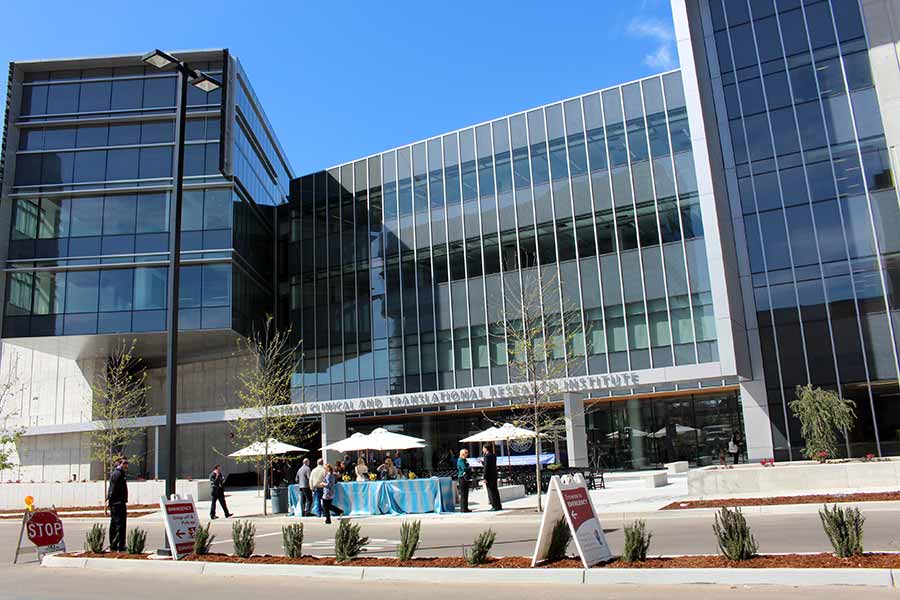Daily Business Report-May 12, 2016
The prototype hyperloop tube in North Las Vegas. REUTERS / Steve Marcus
‘Hyperloop’ Test Promises 30-Minute
Ride from SoCal to San Francisco
Times of San Diego
A Los Angeles company working to make a 30-minute trip between Southern California and San Francisco a reality took a major step forward Wednesday when it used a prototype motor to propel a train over 100 mph along a stretch of track in North Las Vegas.
Hyperloop One is among several companies competing to bring to life a technical vision by Elon Musk, the founder of rocket maker SpaceXand electric car company Tesla Motors, who suggested sending pods holding passengers and cargo inside giant tubes from Southern California to San Francisco.
The technology could allow speeds of up to 800 mph, and carry both both people and cargo.
Brogan BamBrogan, a former SpaceX engineer who co-founded Hyperloop One, called the test a major milestone.
“Technology development testing can be a tricky beast,” he said to a crowd of 300. “You never know on a given day if things are going to work exactly like you want.”
The sled began on a train track and then was rocketed to 105 miles per hour by electromagnets as electricity was shot into copper coils. After a short ride, the sled ran into a sand trap, sending out silicon sprays. If all goes according to plan, sleds will levitate and carry pods in a test later this year. Gigantic tubes already are scattered around the Las Vegas area test site.
Company Chief Executive Rob Lloyd on Wednesday forecast a hyperloop would transport cargo by 2019 and passengers by 2021.
“We’re practicing large, fast construction that includes robotic welding — techniques that allow us to create a perfect production level,” he said. “What people think takes years should take quarters.”
Musk created a stir by saying California could build a hyperloop from San Francisco to Los Angeles for around $6 billion, a 10th of the cost of the state’s high-speed rail project.
Skeptics say real-world challenges ranging from construction permits to making the new technology work mean the costs are likely to be far greater.
“The hyperloop might be promising, but it’s still unproven and just an idea. High-speed rail is a proven technology that’s been in use around the world for decades,” said Lisa Marie Alley, a spokeswoman with the California High Speed Rail Authority.
A hyperloop, she said, will run into the same challenges of any other large infrastructure project, including funding, right of way, environmental permits, approvals and clearances. “None of it is easy,” she said.
Reuters and City News Service Contributed to this article.
__________________________________________
Former San Diego Daily Transcript
Building Sold for $5.3 Million
The former San Diego Daily Transcript building and adjacent parking lots located at 2131 3rd Ave., San Diego, have been sold for $5,300,000 to SDPB Holdings LLC. Michael Donovan, the buyer’s manager, plans to redevelop the property into an office complex.
The Daily Transcript occupied the property for more than three decades until October 2015.
The property, located three blocks west of Balboa Park on the corner of 3rd Avenue and Ivy Street, is comprised of three buildings totalling 34,298 square feet on 22,651 square feet of land. It also includes a surface parking lot across the street from the buildings totalling 10,000 square feet of land.
“San Diego’s Downtown and Uptown office markets are experiencing a wave of repurposing of older properties into collaborative work environments that appeal to millennials and other innovative organizations,” said Tim Cowden of Colliers International, one of the brokers who represented the Daily Transcript in the sale.
Cubic and Industry Partners Awarded
$200 Million Contract by U.S. Air Force
Cubic Global Defense, a business unit of Cubic Corporation, announced that it is part of the Warfighter Readiness Research Division Contractor Team awarded a five-year, $200 million contract by the U.S. Air Force Research Laboratory for research and evaulation of warfighter readiness and training.
The team, led by L-3 Communications Corporation’s Simulation & Training Division, consists of CGD, Ball Aerospace and Leidos.
“We look forward to working with AFRL researchers and our industry partners within the Warfighter Readiness Research Division Contractor Team to find and deliver the knowledge and skills our warfighters need to dominate their operating environment,” said Bill Toti, president of Cubic Global Defense. “As part of our NextTraining strategy, Cubic is focused on raising mission readiness and optimizing human performance for our customers to enable the most effective and efficient training methods.”
Work under this award will be performed at Wright-Patterson Air Force Base, Ohio, and is expected to be complete by January 2023.
UCSD Study Links Higher
PTSD Risk to Genetics
By City News Service
A wide-ranging study published Wednesday identifies possible genetic links to an increased risk of post-traumatic stress disorder.
Scientists from UC San Diego School of Medicine, the Veterans Affairs San Diego Healthcare System and other institutions analyzed DNA samples from more than 13,000 U.S. soldiers and discovered two statistically significant genetic variants that might be associated with PTSD.
The study, published online in JAMA Psychiatry, used data from a pair of Army tests in which the genomes of soldiers were scanned.
One test was performed on 3,167 soldiers with diagnosed PTSD and 4,607 trauma-exposed control subjects, and the other on 947 diagnosed cases and 4,969 trauma-exposed controls.
Dr. Murray B. Stein, a professor of psychiatry, family medicine and public health at UCSD, said two notable genetic variants were discovered.
“The first, in samples from African-American soldiers with PTSD, was in a gene —ANKRD55 — on chromosome 5,” Stein said.
“In prior research, this gene has been found to be associated with various autoimmune and inflammatory disorders, including multiple sclerosis, type II diabetes, celiac disease, and rheumatoid arthritis,” he said. “The other variant was found on chromosome 19 in European-American samples.”
The research also found links to rheumatoid arthritis, and to a lesser extent, psoriasis.
According to UCSD Health, the U.S. Department of Veterans Affairs estimates 11 to 20 percent of veterans from the Afghanistan and Iraq conflicts have or will develop PTSD. The percentage is even higher among Vietnam War veterans.
Prevalence of PTSD in the general U.S. population is 7 to 8 percent, the scientists said.
Researchers with the Uniformed Services University of Bethesda, Maryland, Massachusetts General Hospital, the Harvard Medical School, Yale University, the Broad Institute of the Massachusetts Institute of Technology, University of Michigan and National Institutes of Health also participated in the study.
The research was funded by the Army, the U.S. Department of Health and Human Services, the National Institutes of Health, the National Institute for Mental Health and the National Institute of Drug Abuse.
Acadia Pharmaceuticals Sets Price
Of Newly Approved Parkinson’s Drug
Acadia Pharmaceuticals has set the price of its new Parkinson’s drug — which will be marketed under the name Nuplazid — at $23,400 per year. The drug is for the treatment of hallucinations and delusions in Parkinson’s disease patients.
The drug received approval from the FDA.
The San Diego-based company plans to sell Nuplazid — which is the first drug of its kind — as early as next month. The company has hired 132 representatives to market the drug across the United States. Acadia said it plans to target neurologists, psychiatrists and other physicians.
Study Arms Sheriff’s Deputies with
Nasal Spray for Drug Overdose Victims
Researchers at University of California San Diego School of Medicine have partnered with the San Diego County Sheriff’s Department to implement and study a program that requires all deputies carry and be trained to use a life-saving drug in the event of a discovered overdose and then refer victims to a treatment center once they are revived.
The five-year study, which begins June 1, will examine the effectiveness of San Diego Sheriff’s deputies administering the nasal spray drug naloxone, to overdose victims prior to the arrival of paramedics.
Each year, Sheriff’s deputies arrive on scene to approximately 150 overdose cases before emergency services personnel.
“This is the first research project to investigate if having law enforcement officers equipped with naloxone and trained to refer victims to drug rehabilitation will encourage more people to call 911 and receive treatment,” said Peter Davidson, lead study author and assistant professor in the Department of Medicine at UC San Diego School of Medicine. “Many drug users and their family members are hesitant to call for help for fear they will be arrested. We are hopeful that having deputies directly involved in saving lives will reduce that concern.”
Naloxone is used to treat opiate overdoses, such as heroin, morphine and oxycodone. The Food and Drug Administration-approved drug comes in a small kit with an applicator to create a nasal spray. A squirt in each nostril, like a flu vaccine, puts the medication in the bloodstream.
“It usually works between 30 seconds and two minutes and quickly interrupts the opiate response, which restores the victim’s ability to breathe. It is completely non-addictive and non-toxic,” said Davidson.
Humanitarian Mission

The Military Sealift Command hospital ship USNS Mercy passes beneath the Coronado Bridge as it departs Naval Base San Diego in support of Pacific Partnership 2016. Pacific Partnership is the largest annual multilateral humanitarian assistance and disaster relief preparedness mission conducted in the Indo-Asia-Pacific region. (U.S. Navy photo by Mass Communication Specialist 3rd Class Christopher Veloicaza)




